Convenience is what drives the lives of people today. This prompts them to perform tasks that can make their daily routine more convenient so to speak.
Take, for instance, the activity of shopping. With the advent of many online stores, consumers no longer need to visit the physical ones for making purchases.
This has innately helped the retail stores too. It has helped them market their products among a larger population of customers thereby gaining the ability to maximize their level of profits.
Hence, if one is operating a retail operation, it is critical to building a strong online presence. This is through the creation of an eCommerce site. Next, it is extremely critical to choose an appropriate business model.
Remember, selecting an appropriate model is vital to your business’s success. Perform this carefully so that your business needs are met easily.
What Is an eCommerce Business Model?
An eCommerce business model is a medium adopted to help online retail stores operate and conveniently sell products and services online.
While defining the terminology, you can understand that two aspects get taken into strict consideration during the adoption process. One is the target audience, and two is the strategies to position the products to sell. These two will help the business create a plan, attract customers, and boost engagement.
Reasons eCommerce Business Integrate Business Models
Let's understand why eCommerce businesses integrate these models into their operations.
To make this easy for you to comprehend, we have brought forth stats, facts, and figures. Have a look at them to get a better picture of this.
- According to Forbes, 20.8% of retail purchases would take place online around 2023.
- eCommerce sales would go by 10.4% in 2023.
- The global eCommerce market will have a value of $6.3 trillion in 2023.
Look at the graph below to get a glance through the global eCommerce growth rate from the period 2021 to 2026.
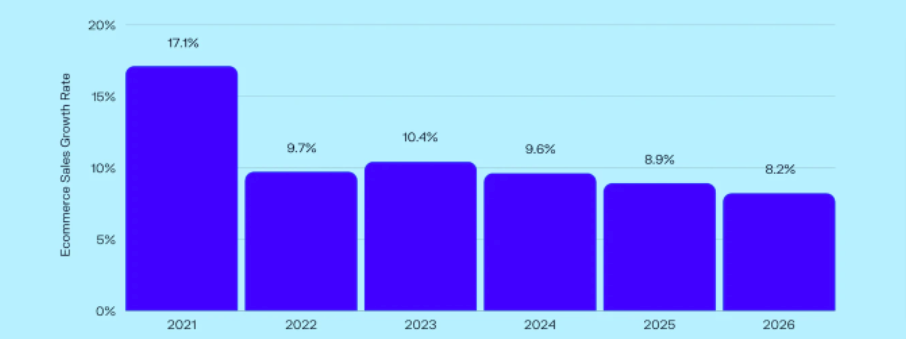
Image source: oberlo.com
- According to Statista, in the US, eCommerce sales will go up by 50% leading to profits becoming $1.4 trillion in 2025.
Look at the graph below to observe this sales growth based on regions.
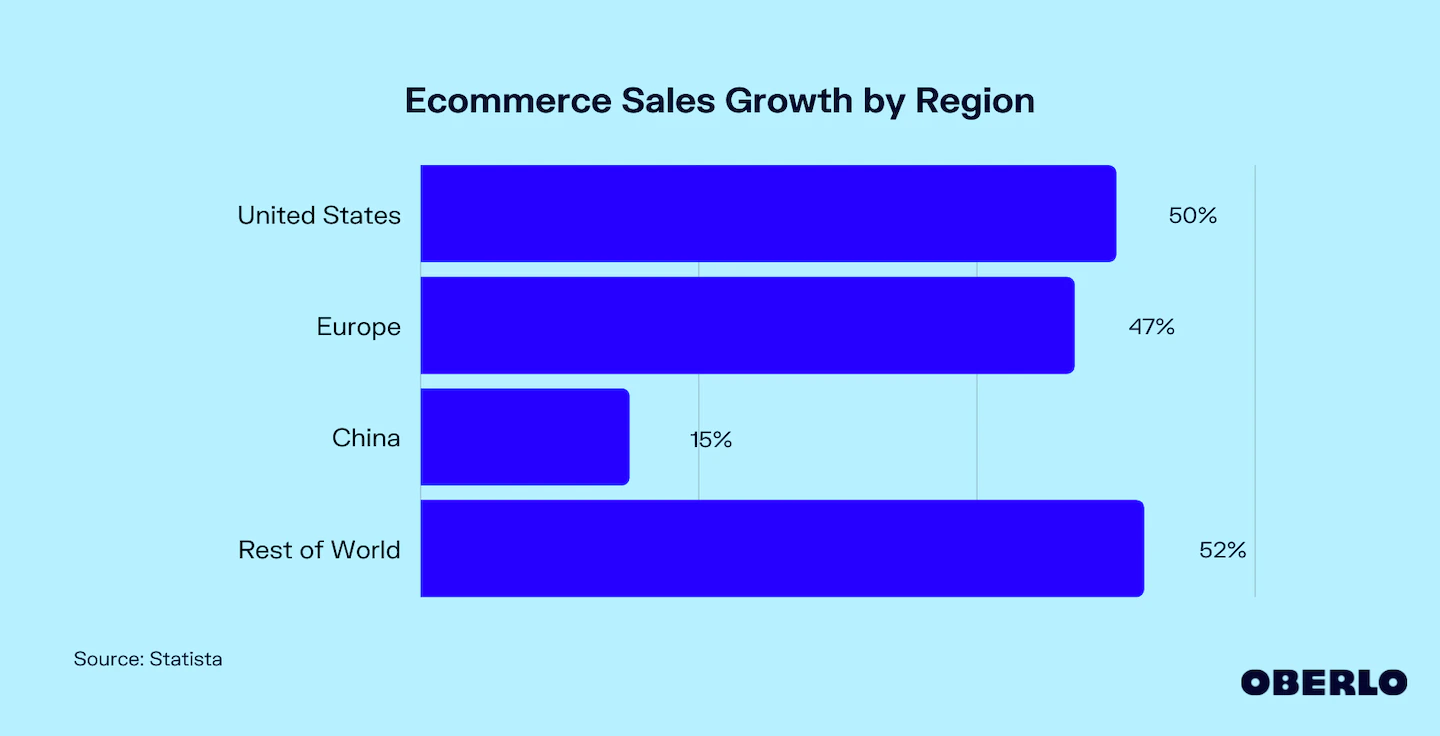
Image source: oberlo.com
Different eCommerce Business Model Types
Through the graphs presented by us above we have clarified the popular nature of eCommerce business, and the way the business has accomplished such a prominent position which suggests why more and more retail businesses are integrating an eCommerce business model. Let us now introduce you to the different business models, citing their contribution to driving profitable results.
Now, look at this image to get acquainted with the models before we introduce you to each one of them.
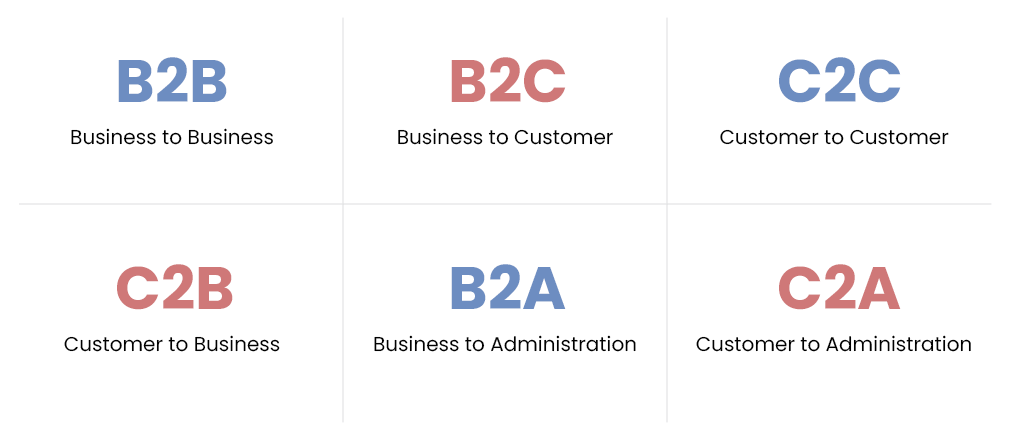
In the above image, you can see the different types of eCommerce business models, namely B2B, B2C, C2C, C2B, B2A, and C2A.
Let's now educate you about these models and their pros and cons alongside how each of them contributes to driving results.
1. Business-to-Business (B2B) Model
Are you operating a business that caters to serving the needs of businesses? Yes? The B2B or business-to-business model is for you. It will help you perform networking in a streamlined way.
Take, for instance, the example of Media Lounge. Adopting the model, they have received many repeat orders and obtained the flexibility to maintain overall product and service quality.
Pros of B2B Model
- Ensures that order quantity goes up.
- Keeps security intact during the sales process.
Cons of B2B Model
- Becomes a challenge for B2B sellers to stay unique.
- The setup process is complex.
2. Business-to-Consumer (B2C) Model
After B2B, the next popular eCommerce model that is quite popular is the B2C Model. This is an apt model for those businesses that consolidate their focus toward marketing products that are relevant to customers.
Once customers have glanced through your products on the website, they carry out the purchase thereafter.
Example of Business Integrating the Model – Portugal Footwear.
Pros of B2C Model
- Helps customers purchase products and shop for them at their convenience.
- Prevents competition gap by lowering marketing and advertising costs thereby ensuring quality and item accessibility is easy to perform for customers.
Cons of B2C Model
- Limits product exposure amount to a great extent.
- Catering to market needs after entering the cut-throat competition becomes difficult.
3. Consumer-to-Consumer (C2C) Model
Check out this image to get a glance at the popular names that have boosted their presence in the market.
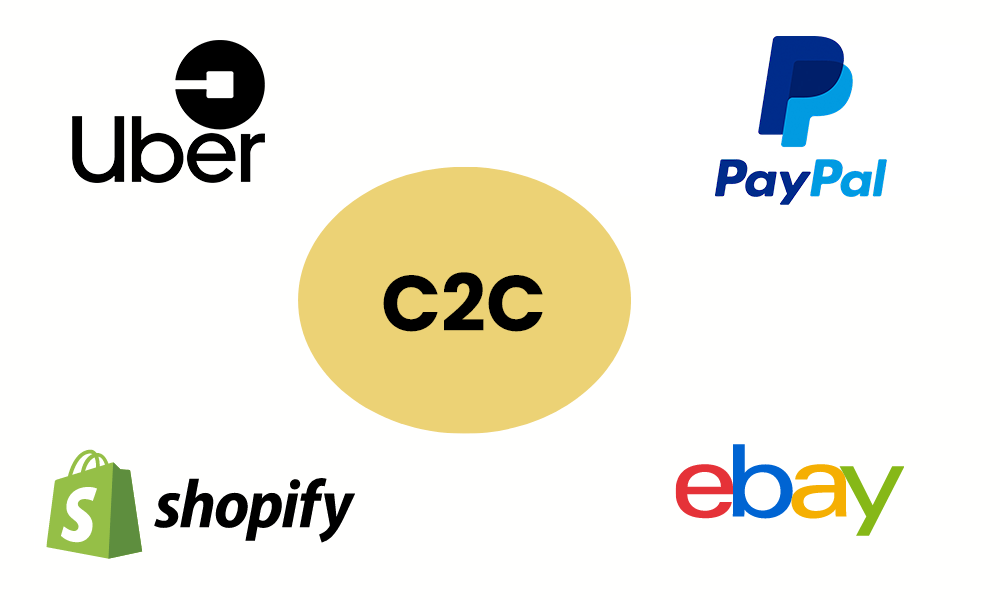
In the image above you can observe some popular names like Shopify, eBay, etc. that help customers to connect with other consumers through the use of a third-party platform. This is to ensure that the process of buying and selling can take place conveniently between the two.
Pros of C2C Model
- Increases rates of visits and sales.
- Creates a credible image of the seller in front of customers.
Cons of C2C Model
- Regulating product quality becomes an ordeal.
- Platform fees may be extremely high.
Also read: Best 10 Payment Gateways To Succeed In eCommerce Platform
4. Consumer-to-Business (C2B) Model
Coming fourth on our list is the Consumer-to-Business. In this model goods and services get transmitted from the customer to the business, whereas finances are transferred from the business to the consumers.
Look at the image below and get a glance at the model.
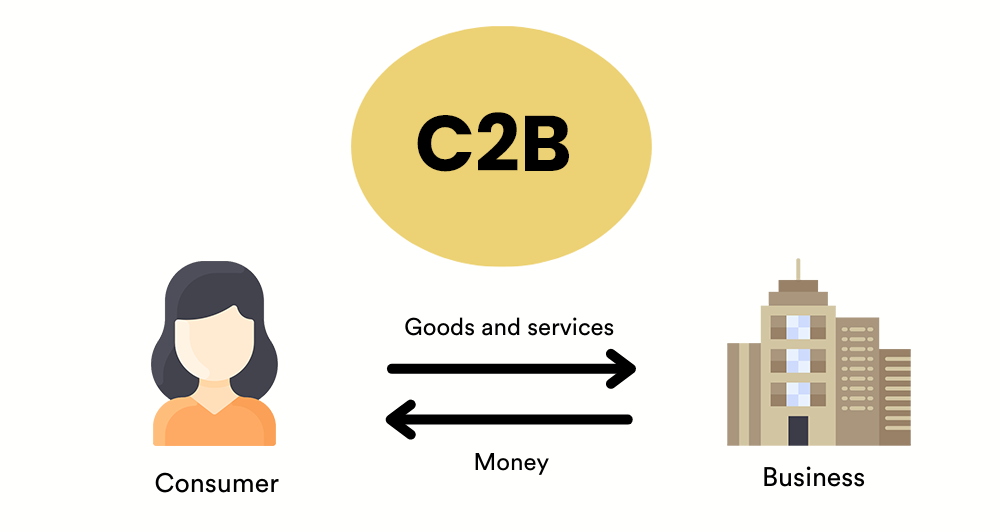
Pros of C2B Model
- Creates a channel to support companies in sourcing and hiring talents.
- Enables the service providers to gain work experience.
Cons of C2B Model
- Conveying project ideas becomes difficult.
- Quality of work becomes a major bone of contention.
5. Business-to-Administration (B2A) Model
The B2A model also known as the business-to-administration model is one where companies sell their products to government agencies through the two signings a contract with one another.
Take for instance a company that involves in SaaS. The organization through the process of signing a contract with the government can now maintain the state’s web portal.
Also read: SaaS App Development: A Comprehensive Guide
Pros of B2A Model
- The size of government contracts is large.
- Accelerates track, manages pulse on sales, etc.
Cons of B2A Model
- Sharing and pricing is an expense.
- Provides pricing and product information.
6. Consumer-to-Administration (C2A) Model
The model involves the sales of different marketing products and services through integrated communication techniques like branding, marketing, web-based connectivity, etc.
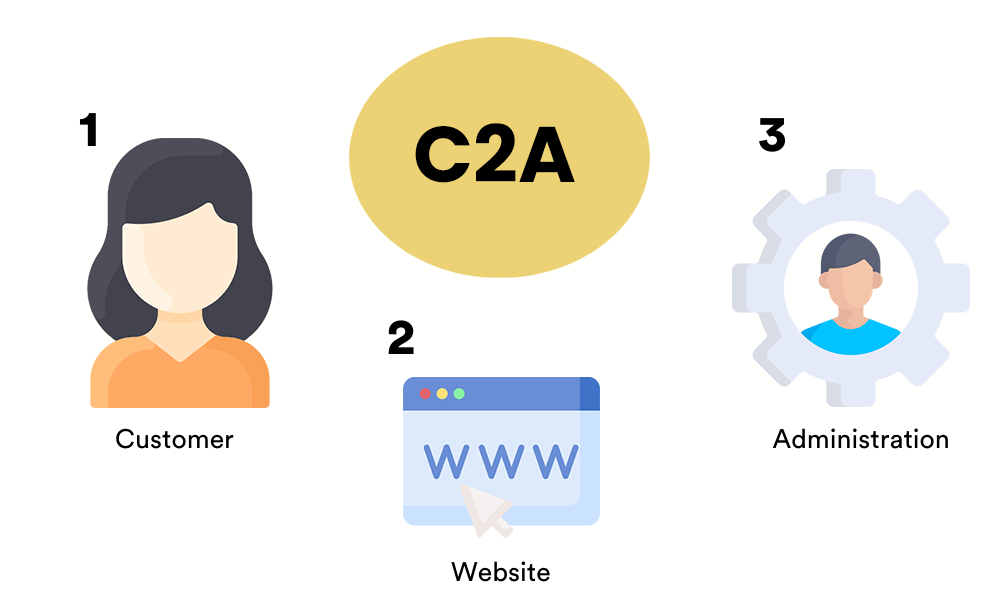
As you can see in the image above the medium allows customers and government agencies to connect and perform tasks that include paying taxes, electrical bills, and so on.
Which eCommerce Business Model Drives Results?
Above I have explained the different eCommerce business models citing their different pros and cons. Let us now gain insight into the model that is known for its result-driven approach.
When it comes to determining and choosing a model that drives results, B2C or the business-to-consumer model is one that is known for making this possible. This is due to the assistance it provides in terms of raising the profit margins. This is followed by boosting the reach of the business and lastly, delivering a unique customer experience by developing an eCommerce app.
Ending Words
To get acquainted with the eCommerce business model that drives results, it is important to choose an appropriate value delivery model so that maximum value is delivered to customers. Therefore, make sure you have some questions ready like getting knowledge about the product you want to sell. This is followed by knowing your customers. Last comes the enlightenment you gauge about your capabilities. Once you have obtained clarity concerning all these areas you can streamline your eCommerce business model selection process to make a significant difference in your operations.


No comments yet